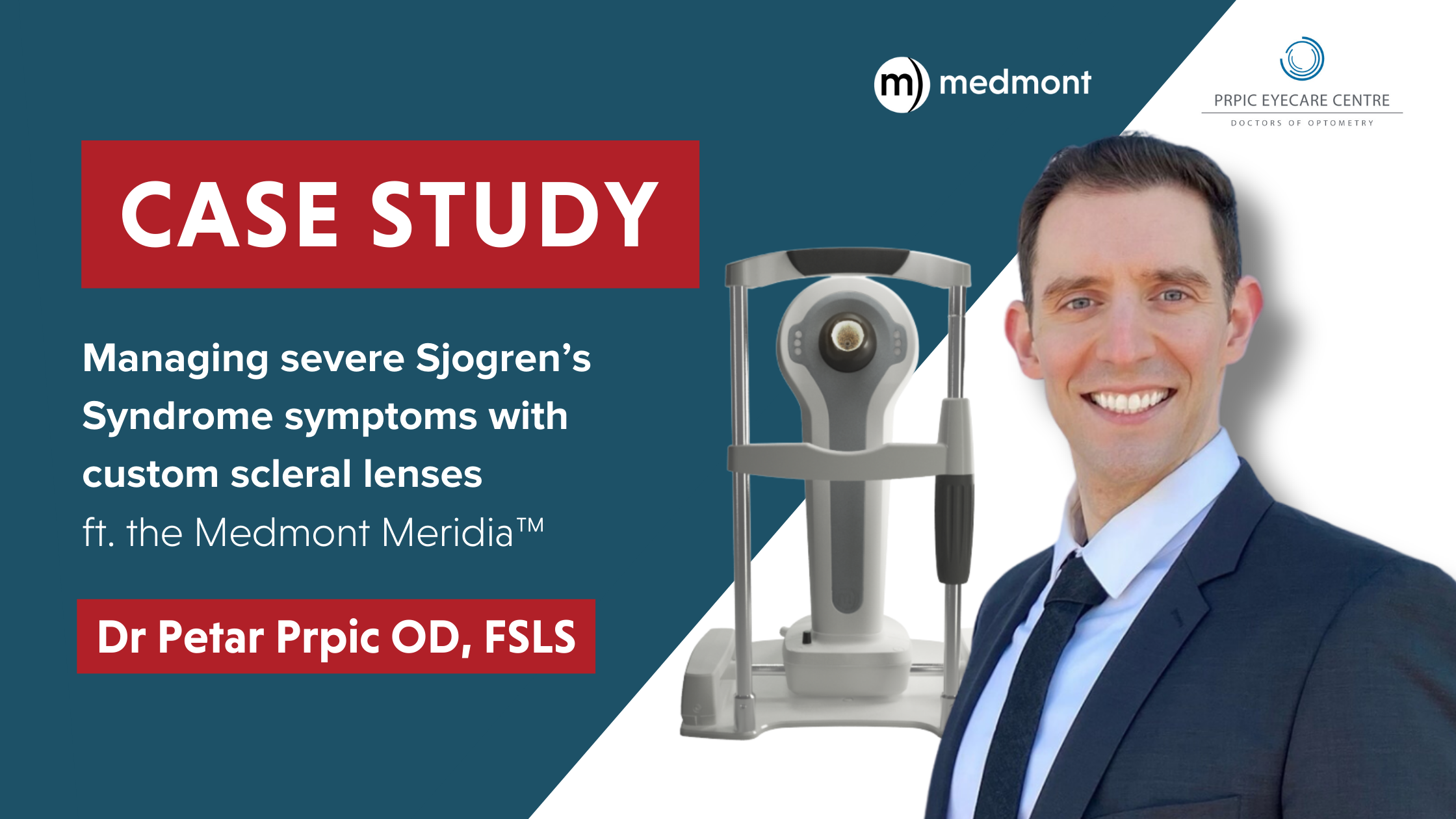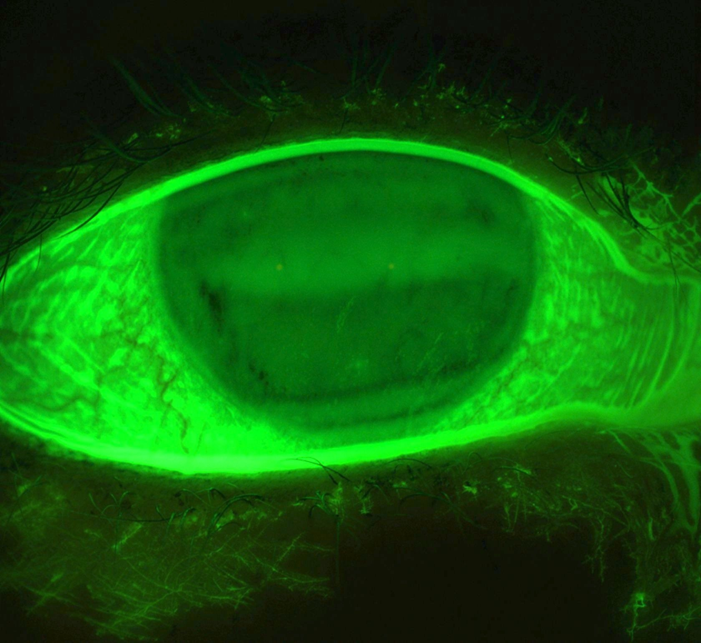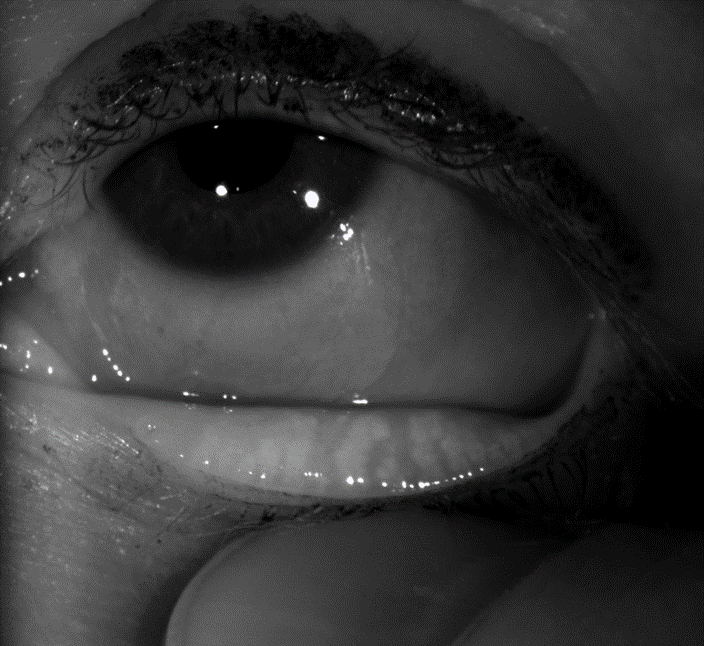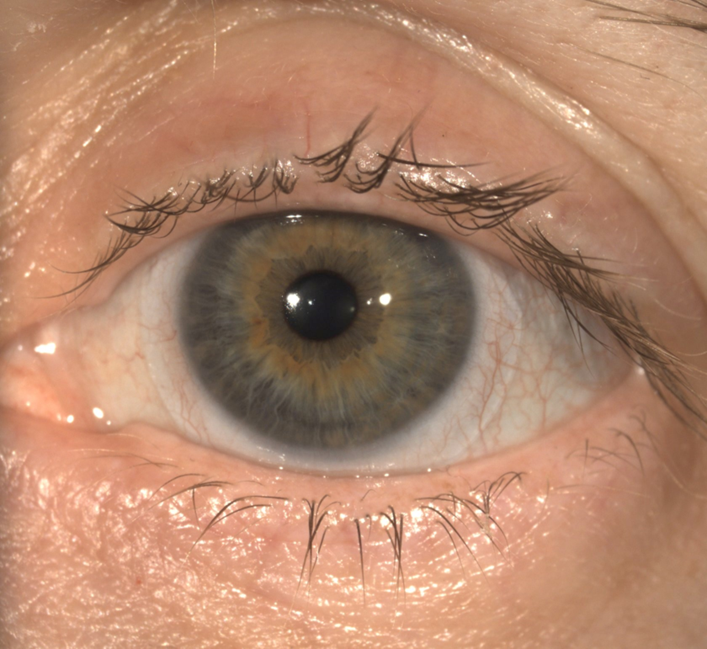
We love hearing how you’re transforming patients lives. Case in point, Dr Petar Prpic of Prpic Eyecare sent us this incredible report about a Sjogren’s Syndrome patient struggling to carry out daily activities because of severe dry eye. Have a read to see how his custom solution gave her the relief she’d been looking for.
A 47 year old Caucasian female was referred to me by an optometric colleague for a specialty lens consultation for severe dry eye secondary to Sjogren’s Syndrome. She had been suffering with dry eye symptoms that had impacted her ability to work as she was unable to spend any extended period of time working at a computer.
She reported that she was unable to tolerate CL wear, air conditioning, air travel, reading, or watching TV and that she had lost her motivation to do anything. Significant pain and visual glare/distortion would occur as her eyes got dry. She had been under the care of Optometry, Rheumatology and Ophthalmology but they had not been able to successfully mitigate her symptoms.
Historical treatments included at-home lid hygiene and warm compresses, omega-3 supplementation, topical lubricating drops/ointments/immunomodulators, punctal plugs and environmental/dietary modifications. The patient had been told that there is nothing else that can be done at this time. She reported increasing frustration with her situation and could not understand why her eyes were still bothering her so much.
Medmont Meridia™ fluorescein imaging (fig. 1) and meibography (fig. 2) were utilized to educate the patient on the etiology of her condition and how physiological and environmental factors would influence her symptoms.
We discussed the option of further referral for in-office dry eye therapies such as radio frequency and/or intense pulsed light, or consideration of scleral lens fitting. She was hesitant to proceed with further dry eye therapies but was interested in the option of scleral lenses to be used as a barrier to the external environment and to consistently bathe her ocular surface. She was also excited at the added benefit of refractive correction.

Figure 1

Figure 2
It was decided to proceed with a scleral lens fitting in both eyes. A 16.3mm diameter ICD FLEXFIT® diagnostic lens by KATT Design Group© was selected due to its capacity for; easy size adjustments, individual quadrant manipulation of any zone, decentered multifocal optics, and Hydrapeg™ lens coating if needed.
The patient appreciated the initial comfort and visual acuity with an over-refraction.
Full custom lens fitting was performed utilizing Medmont Meridia™ anterior segment imaging (fig. 3), Zeiss CIRRUS™ OCT scans (fig. 4), and consultation with the team at Precision Technology Services Ltd.

Figure 3

Figure 4
This case presented some challenges as fitting dry eye patients requires minimal corneal clearance, but avoiding any corneal touch, which we were able to achieve (fig. 4). Ongoing management of the dry eye is paramount in the setting of scleral lens wear as it is not a replacement for the dry eye treatments and therapies.
BCVA in Scleral Lenses: OD 20/20 OS 20/20
The patient has adapted well to wearing scleral lenses and is extremely pleased with the acuity and significant improvement in comfort while wearing the lenses. She is able to wear them for over eight hours per day symptom-free and has been able to get back to work in front of a computer screen and enjoy other daily activities. The lenses have had a significantly positive effect on her life and she is no longer constantly suffering during her daily activities.
Petar Prpic, OD, FSLS
Dr. Petar Prpic was born and raised in Richmond, BC. His undergraduate studies were at the University of British Columbia where he obtained a Bachelor of Science in Biology. He earnt his Doctorate in Optometry from the New England College of Optometry in Boston. During his Optometric studies, he was granted membership to the Beta Sigma Kappa International Optometric Honor Society for every year of attendance, awarded the Dr. Hyman R Kamens Achievement Award and became a recipient of the New England College of Optometry Presidential Medal. His clinical externship experience includes working at a Veterans Administration Hospital and Neighbourhood Health Centre in Massachusetts, an Indian Health Services Centre in Alaska, The New York Eye and Ear Infirmary in New York City and family practices in Connecticut.
